#katsuhiro otomo style
Text
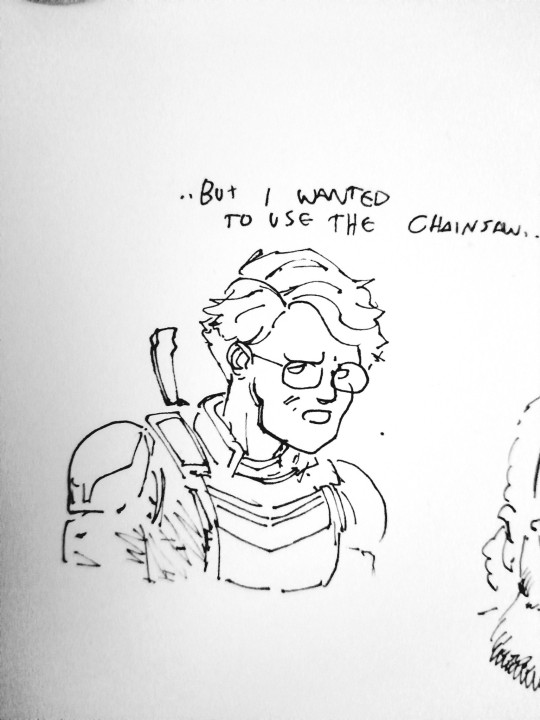

Adrian in Katsuhiro Otomo style
132 notes
·
View notes
Text

#@jnkboy#Junkboy#the Terminator#大友 克洋#Katsuhiro Otomo#illustration#art#design#character art#character design#80s action movie#80s#1980s#fan art#jnkboy#in the style of Katsuhiro Otomo#in the style of Otomo
954 notes
·
View notes
Text

#sonic the hedgehog#sonic fanart#this was my attempt at drawing sonic in katsuhiro otomo’s style…it was like 1 am lol
124 notes
·
View notes
Text






Roujin Z (1991)
#anime film#90s anime#anime screencap#anime aesthetic#akira anime#katsuhiro otomo#scifi anime#retro anime#old anime#classic anime#anime classic#anime art#anime style#anime movie#anime screenshot#old anime aesthetic#90s anime aesthetic#anime scenery
88 notes
·
View notes
Text



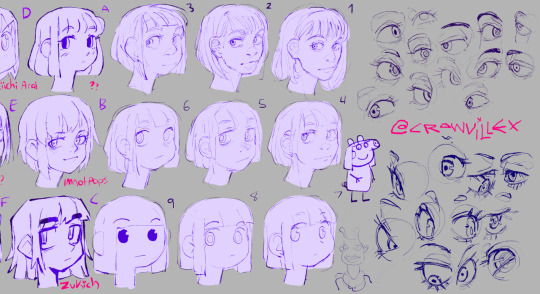
Various artist face style studies 😀✍️
Mostly other artists ik and some iconic ones too but these were real fun to do and see how everyone stylized the same facial features & proportions along with linework, idt I studied anyone again apart from one in the future though... 👀
#digital art#digital drawing#doodle#painting practice#psg#pswg#inio asano#danny antonucci#bkub okawa#takehito harada#naoko takeuchi#toru nakayama#bryan lee o'malley#katsuhiro otomo#style study#style practice#keiichi arawi#osamu tezuka
66 notes
·
View notes
Text

#Marin Sakata#阪田マリン#Kenwood#Showa Era#Showa#昭和#Fashion#Style#Photography#2024#AKIRA#Otomo Katsuhiro#Katsuhiro Otomo#Kaneda
14 notes
·
View notes
Text
INTRODUCTION TO CREATIVE PLAY: ART STYLES
As part of an exercise during my second session of Introduction to Creative Play, we studied famous art styles of animation such as the art style of Hanna Barbera cartoons like Top Cat, the styles of other cartoons such as South Park and anime films such as Akira and Spirited Away, and so on.
After this, we were tasked with drawing a person or animal in the style of iconic pieces of animation by selecting a style and a subject via a spinning wheel website. Drawing the pieces under a time limit of a few minutes.
The first combination I received on the subject wheel to draw was a Dinosaur and the animation-style wheel landed on Akira (1988). I was rather intimidated by this combination, as the art style of Akira creator and character designer, Katsuhiro Otomo, is highly meticulous and detailed. Something I highly doubt I could replicate fully. Plus, Otomo, as far as I am aware, has rarely if ever drawn dinosaurs or dinosaur-like creatures in any of his manga or anime films, so I had very little reference to go off of in that department.


Still, I made my own attempt at illustrating this concept by using pictures of a t-rex's head found on Bing Images and some pages of the Akira manga as reference. particularly, I tried replicating the aggressive determination of the eyes of Akira characters.
I continued to tweak this sketch, adding shading similar to the block shading of the cel-animated Akira film.
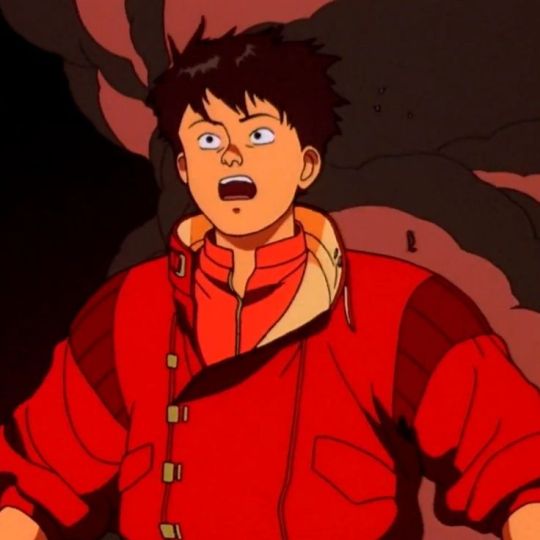


After running out of time on this round of this exercise, I then moved on to a new sketch. The next combination I was given by the wheels was a skunk in the style of Spirited Away (2001). Looking up references and images for the spirited Away art style, I saw the characters of the mouse and the bird that carries it. Given how the Skunk was a similar small mammal, I used the design of the mouse as a reference.


These two studies were the only two drawings I could get done during the class, and I'm proud of both of them. I'm especially proud of the Akira style T-Rex for the shading and detail I drew. This was a really useful exercise as it forces you to look more closely and analyse the work of different artists working in different genres. To break down the elements that make up the whole and to understand/appreciate those elements. I would like to do a style study like this again in my own time.
#akira#akira (1988)#anime#animation#character design#spirited away#spirited away (2001)#studio ghibli#katsuhiro otomo#style study#art style#intro to creative play
2 notes
·
View notes
Text


style experiment i made weeks ago and slowly worked on but at this point i don't think i'll be finishing it. i wanted to study the things i liked the most about katsuhiro otomo's style, as well as try a more mechanical look to the replika bodies even if it's detached from canon.
214 notes
·
View notes
Text
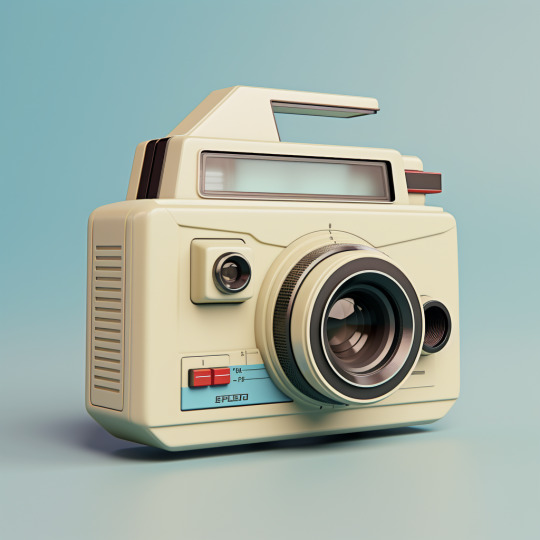
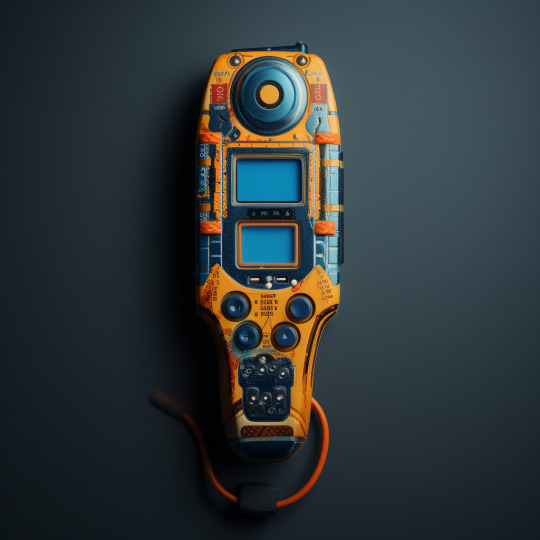
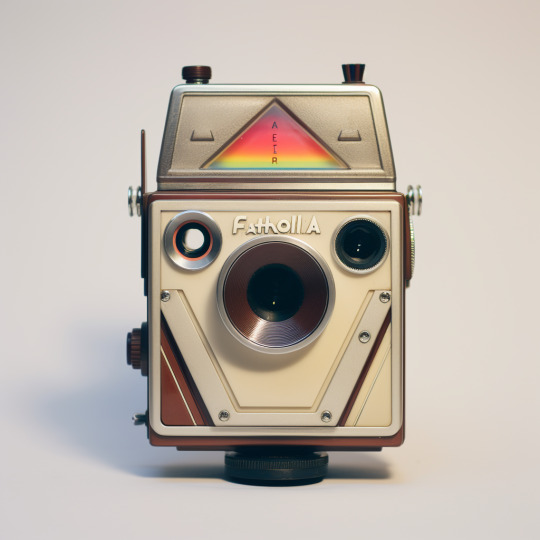
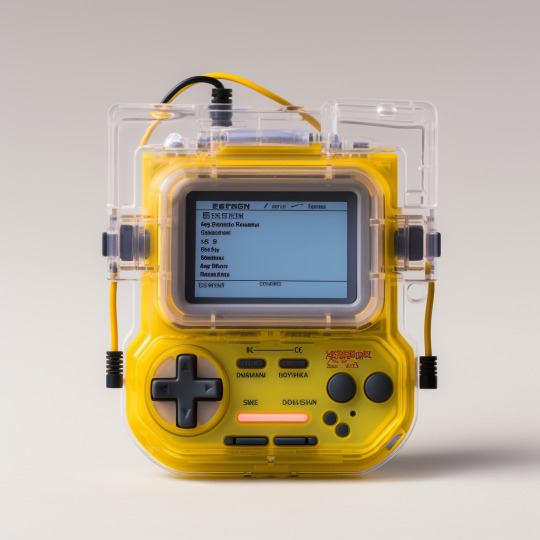

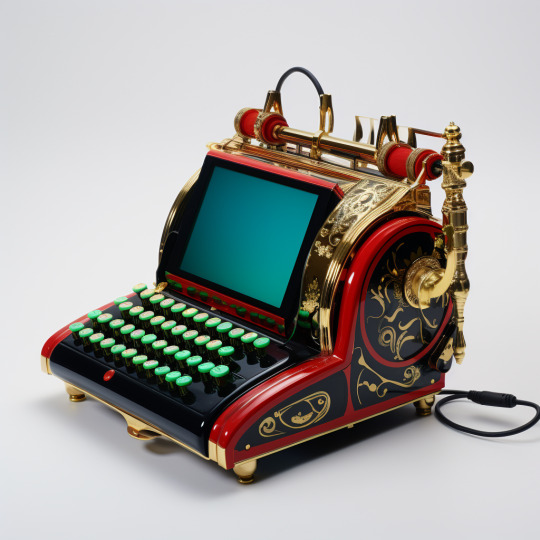

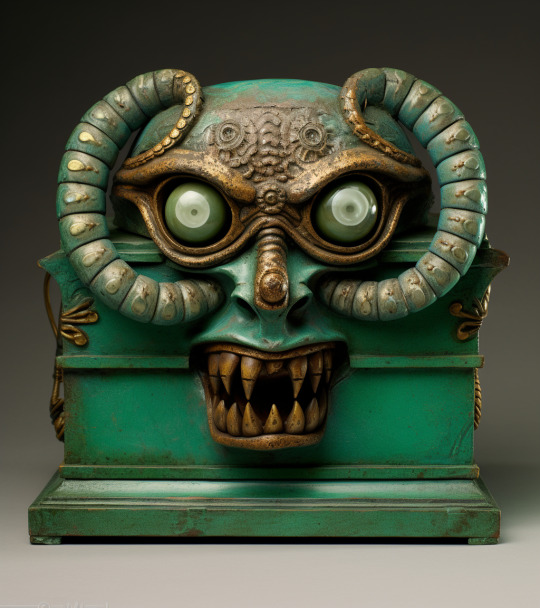




All These Devices Are Now In Your Pocket
Select photos from the Uncanon Valley Museum's installation of the same name, intended to show youngsters just how much utility has been compressed into a single device, and how much the market has narrowed because of it.
By Row:
Martel InstaKlik Camera (1984) / Melinoë Industries GPS-2s (2001)
Fatholla Light Meter (1977) / Issac's Brand Underwater MP3 Player (2003)
Klaxaxabaxan™ Handheld Game (1994) / "Prince Adrian" Platinum Edition Speak & Spell, Tiffany's (1966)
Edison High-Freq K3030 Camera (1973) / L700 Four-Demon Chest, Panasonic (1981)
Splap-it! Game, traditional (1922) / Demiurgical Responder Engine, J.W. Welles & Company (1873)
L'l Farnsy Vacuum-Tube Radiotrox (3022), Poch Ackaoch Perpendicular Receiver (1971)
The images above in this post were made using an autogenerated prompt and/or have not been modified/iterated extensively. As such, they do not meet the minimum expression threshold, and are in the public domain.
Process under the fold:
Lotta prompts here, so I'm going to just go over my process with these.
I took a number of pictures of consumer electronics, along with some wild card objects, and ran them through with Midjourney's /describe feature.
I then shuffled the resulting prompts, separating them with :: marks, resulting in prompts like the following example:
a gold and red medallion located on a white background, in the style of rangercore, konica auto s3, curved mirrors, shuzo oshimi :: the skull in a purple outfit is made from a plastic, orange and green, in the style of m42 mount, terrorwave, packed with hidden details, destroyed gadgets sculptures, katsuhiro otomo, toy camera effects, science academia
The :: marks are used to denote weights normally, but if you don't weight them, MJ tends to blend the concepts. So after that I just appended:
:: electronic device photograph on white background
The example prompt was for the "Edison High-Freq K3030 Camera (1973)" image.
#unreality#alternate universe#uncanon valley#midjourney#midjourney ai#generative art#public domain#public domain artwork#electronics#gadgets#camera#handheld
62 notes
·
View notes
Note
I really love your art!!! Can i ask what artists inspire you?
Thank you for your question! I'm not sure if you're asking about my black and white comics or colored illustrations, as they involve quite distinct creative approaches. Let me briefly share about both!
For black and white comics, I prioritize conveying information and storytelling over drawing techniques. My paneling is often influenced by filmmaking, and directors like Quentin Tarantino and Stanley Kubrick inspire me. While I don't read a lot of comics/manga, I admire artists such as Inoue Takehiko, Otomo Katsuhiro, Matsumoto Taiyo, Takano Fumiko, Fujimoto Tatsuki (who also loves films), and Moebius.
For colored illustrations, I've had a strong liking for the illustrative styles of the Art Nouveau period and Japanese Ukiyo-e prints with their strong compositions. Lately, I've been drawn to the aesthetic of the space age. Some of my favorite artists include El Lissitzky, George Barbier, Ivan Bilibin, Maurice Denis, and Antonio Lopez.
Hope that helps!🩷
22 notes
·
View notes
Text
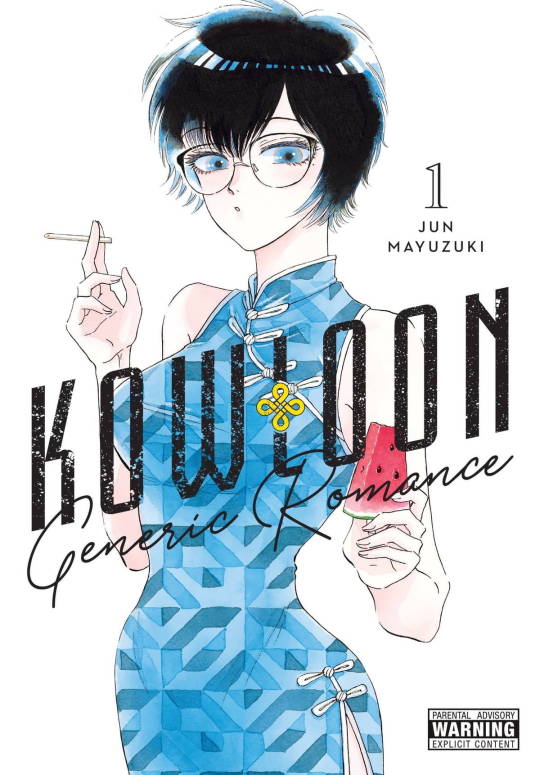

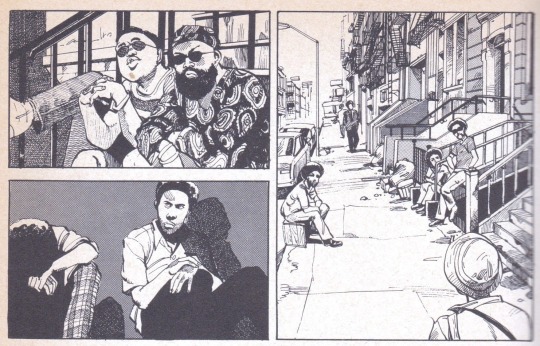
2023: for the "record", my favorite experiences with comics this year--
#5: Junji Ito's Dark Paradox. This was the year the Viz App became available, and that had a lot of great classic experiences over there-- switching between Ranma 1/2 and Cross Game has been ridiculous. Hall of fame, excellent material. Junji Ito's Dark Paradox was the first manga I checked out on there, and it's just ... it's just a fun "bad dream" of a comic, you know? I have a very particular range of horror that works for me, and this is in that range, something like Phantasm where there's a goofiness but the nightmare logic of it carries you through...? American comics are so bad at horror, though-- they're so bad at it that there are American comic creators who wrote entire essays about how "horror doesn't work in comics." And then you read these Japanese things and it's like... the entire continental United States, not even in the race! Not even in the race!
#4: Osamu Tezuka's Paper Fortress. It's not available legitimately as far as I know-- I think it's just too short and maybe too tough a read. It's his war memoir, and it's just... it's a rough little comic. There's an innocence to his style, that he knows how to use against a reader-- you can see that in a lot of his comics-- and I think it really becomes especially tough with Paper Fortress. If you saw Godzilla Minus One, and if you saw Boy and the Heron, I think you have to read Paper Fortress to really complete the trilogy. It's an essential third part of that trilogy. I'm not a Tezuka expert, like other people-- there are big ones I haven't read... but for me, I think it's Tezuka's best comic, or the best I've seen.
#3: Katsuhiro Otomo's Sayonara Nippon, which I wrote about at numbing length over here. It's the greatest action comics artist of all time, but doing a hang-out, edgelord comedy (with nods to R. Crumb!) set in Harlem that is probably unprintable now because of its, uh, "political incorrectness", let's go with that, let's use that phrase. It held my attention, haha. But despite the parts I have a discomfort with, it's Otomo-- he's one of the best to ever do it, for me-- and it's Otomo doing something I'd never seen him do. I had a good time. I don't necessarily recommend it.
#2: Fumi Saimion's Tokyo Love Story. Another scanlation-only deal-- I don't think it's available legitimately. I misidentified it as a josei comic, while it's technically seinen-- either way, it's just a comic about young adults trying to figure themselves out romantically. I think you'd call it a "manic pixie dreamgirl" story, but Saimon's a woman, so-- I think a manic pixie dreamgirl lands differently when it has a woman creator. Maybe that's a mistake on my part, but-- I see that more as a kind of wish fulfilment, and interesting as such, I guess?
But I don't know-- for me, it's just how Saimon draws... It's so loose, but it's just enough. It's not burdensome at all, when you look at it. So you just get to be with the characters-- the art's never trying to get in the way. It's the kind that makes you want to draw because it doesn't seem impossible to draw-- like, "oh drawing's fun." I see comics now, American comics, and none of them make drawing look fun-- they all make drawing seem like work. All the lighting effects, you know?? What kid is at home with a pen saying to themselves, "Oh I can do that" and copying a drawing with that much lighting going on, where you can't see the lines because they're all holding colors, etc. When I look at these comics... it's certainly not "lazy art" or "bad art." It's just that you get to be with the characters.
And then easy #1, mentioned briefly here, is Kowloon Generic Romance, particularly the first volume, which is available legitimately (rare for this list haha!), and is just... It fucking knocked me out, man. It's hard to articulate the why of it, but it's like... if I made comics more often, it's something I wish I could make. It's off the charts horny, which I don't think I could do in a comic, not as unashamedly as that. But it's just got this-- it's just the vibes are immaculate, man.
Like, I think the thing that unites all the comics I've mentioned... comics having a breath of life to them. Where ... you feel like you're watching people that exist. I think when you're a kid, you get that from comics, and a lot of the angry people you see online are people for whom "Spiderman is no longer alive" because they can't keep it up as they get older, and their imaginations wither, and they think the reason why is "politics" and not... you know, the sad clawing of mortality against their flesh.
But like-- Kowloon Genric Romance, it's not just that the characters are breathing but they're like... hanging out in apartments, smoking cigarettes, being hornballs, swooning, feeling nostalgiac. They're alive and they're in a Wong Kar Wai movie?? That is ... That's pretty gnarly, to me.
There's a science fiction element that was dragging it down in the last volume I read (I think a couple came out since then, I'm behind, but). But it's just-- it's very much a manga set to Citypop-- you can hear the soundtrack in your head, and I bet if I compared notes to other people who read it, our soundtracks would overlap significantly. It demands it, you know? It's just... It's vibes. It's just so good at vibes...
Worst Comic: the Viz App has Hot Gimmick and Hot Gimmick is a mess. I had a fun time with it because the wrong choices have a sort of... they're almost funny because it's like "why the hell did they make this like this" quality to it. But that is trash. I can't defend it. It's kind of unacceptable. I read every page.
Honorary Mentions: like I said, Cross Game and Ranma 1/2. I thought Yasuda Kasumi's drawings on Fool Night were very very pretty. I thought Wild Strawberry started strong in that respect too, though it's lost my attention fast when it became more of a standard shonen. I'm very confused by One Piece lately but continue to enjoy that and Chainsaw Man (where I'm very behind as I figured out I enjoy it more binging it a little).
I decided to be a manga guy about 3 years ago, and get American comics out of my life, and stop writing about them, and blah blah blah, but that said, I continue to be very involved with the comics, in all kinds of weird ways, whether it's stuff I can't talk about, making notes for future projects, trying to get into "drawing shape" again (that is *not* going well), etc. I had a very, very good year as a reader this year, too-- that hasn't always been true, but ... I feel like as a reader, this was a year far above average for me, or what little I settled for as average prior to 2020. I hear things are rough out there but I hope that's true for other people, too. Anyways, that was my year.
36 notes
·
View notes
Text
An analysis of Otomo Katsuhiro's Hansel and Gretel (the story, not the anthology)
The anthology "Hensel to Gretel" is, as I said in my previous post, comprised of short sequences and brief parodies of a few pages... All except the opening story, the one that gave its name to the collection, that is a full blown story and a truly... let's say original take on the "Hansel and Gretel" story, one that takes back all the elements that would form the style of the anthology as a whole - and thus forms the perfect introduction.
Given the fascinating... oddness of this Hansel and Gretel I wanted to do a quick analysis here (or one of my "Let's overthink everything" analysis depending on how this will go). I will use scans of the pages to punctuate and illustrate my words.
THAT BEING SAID A WORD OF WARNING! This is an adult and mature parody of "Hansel and Gretel" with some dark humor, but also some... yes some gore in it and crude imagery. So this is not for everybody, be warned, this isn't any story for children. Are you ready? Good. Let's proceed.
(And just to be sure I'll put it all under a cut so that I don't get bothered by folks who claim I threw unwanted images at their face). All you will have, if you don't click below, is this safe and neat first page of the story:

Alright... Let's go under.
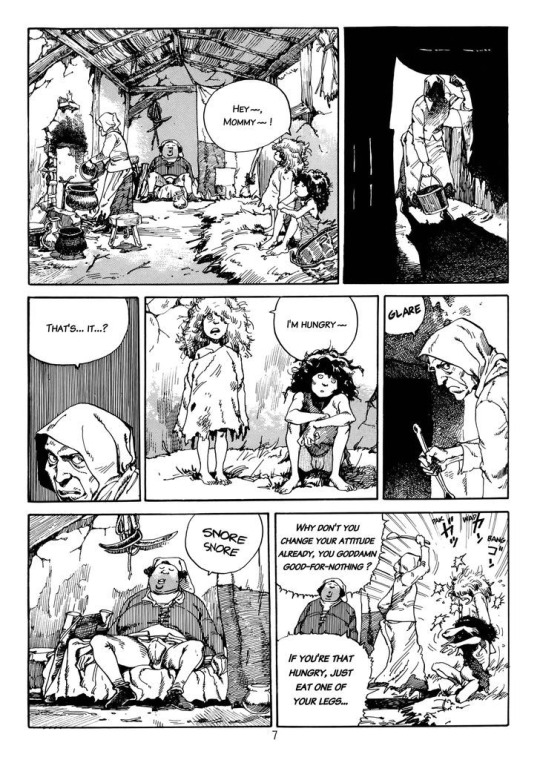
We open with a depiction of the poverty and misery of the family - and as the opening page says, they are VEEERRYYY poor. No joke. Not only is their house a ruin, but the two children themselves are in an obvious state of denutrition and neglect. They are copy-paste of children during famine - skeletal bodies with bloated abdominal organs, long unkept masses of hair, and Hansel doesn't even has clothes and goes naked for half of the story. (Ah yes, another warning for those who might be souls "too gentle" for this - yes you have a naked child going around in this story.)
Speaking of bodies - there is something that should be known about Otomo Katsuhiro's style. He deliberatly avoids the traditional "manga character design". He has always avoided as strongly as possible this smooth, alien-like, hyper-coded, specific "anime-design". He always wanted his characters to be realistic, to be ethnic, to be ugly, to be... well normal. And this shows here, just like in the rest of the stories of the anthology, by an exploration of various body shapes pushed to the extremes: bodies too tall, too small, too big, too frail (if you look at his Little Red Riding Hood tale, the Big Bad Wolf is a gaunt, bony, elderly looking creature while Little Red is a clearly overweight and round child). In this case, we have this extreme explored with Hansel and Gretel, who have much, much too skinny bodies - and their father, who is a very fat, if not obese man. And here is one of the first clues that something... weird and bizarre is going on in this family.
Hansel, Gretel, the mother, they are all gaunt and skinny and starving. But the father... the father is very fat, and clearly healthy. He is a lazy guy who peacefully sleeps for most of his scenes, or who does his actions with an easy, carefree, let's-not-think-about-it-for-too-long attitude. He is clearly a comedic character, the goof and the buffoon, to the mother's wicked, antagonistic character - here, the original personality of the two parents from the Grimm tale are exaggerated to the extreme, the bad mother being verbally and physically abusive, while the dominate father is a fat, sleepy, slug of a man. In fact, the crucial and anguished scene of the mother telling her husband the kids should be lost is completely wasted - because as it turns out the father was sleeping deeply while the mother had her evil monologue, and didn't listen to anything she said.
But there is still this question that is raised, by the mere contrast of the bodies: why is the father so fat and content and unworried if the family is indeed in a state of extreme poverty and severe hunger? Why is he so cut out of his own family? The reader wonders and can only theorize at this point, but there is clearly something unsaid or missing to this puzzle.
To continue, let's look at this set of pages:


On the first page I want to draw your attention to how, when the mother gives the children bread, they savagely and madly wolf it down, to the point the mother calls them "dogs". This is again part of this entire aesthetic of - let's paint malnutrition and famine in its real light, show what it truly looks like. It is skinny kids, dirty kids, that will eat with frenzy any good food they find. There is no glamorization or romanticism of poverty or famine. But more generally, this is part of the mangaka's effort of "parody". Indeed, what is the picture that comes to your mind when you think of "Hansel and Gretel"? Cute little doll-like kids. Blond cherubs in pretty clothes. And what are the Hansel and Gretel we are offered? Grime-covered, bone-showing, famished children with messy, dirty hair and either rags or no clothes. The entire Hansel and Gretel aesthetic is completely and violently broken down, and the two little German kids straight out of a Nazi propaganda now become subjects of a documentary about third-world famine.
On the second page I would like you to pay attention to the little critter that crawls in the forest. This is the first of the "birds" that haunt the forest that we see, except... It is not a bird. It crawls and moves like a toad, and yet it is a fish. A fish with a little human leg. With a second leg-like appendice, but held by pieces of wood, a hastily made crutch. And it keeps laughing bizarrely. This creature is straight out of a Bosch painting - and Bosch was in fact one of the stylistic inspirations behind this manga. The weird, bizarre, hellish, grotesque paintings of artists such as Bosch or Bruegel form the backdrop and aesthetic Otomo Katsuhiro wanted. Perfect for his quest of the ugly, his search for absurd magic and hellish wonders - his stories might be those of Grimm, but they are set in Bosch's Europe.


Just like i the original story, after one brilliantly working "let's spread little rocks" plan, Hansel tries a "let's spread bread crumbs" plan and it fails... But in the ironic twist here, not because the birds ate it (in fact, when Hansel complains about it, one of the titular birds actually ironically comments "I see..." upon this false accusation, much to Hansel's confusion). No... it is Gretel that ate it all, because Hansel did not inform her of his plan, and she just saw how he dropped all his crumbs of bread, and being a very hungry child, of course she just ate it all.
Once again, just like with the parents, the characters of the children are exaggerated - and just how in the original tale Gretel is a scared, younger, helpless child, here she is... well younger yes, but also as a result much dumber and much more self-centered, and surviving by focusing exclusively on her basic needs.
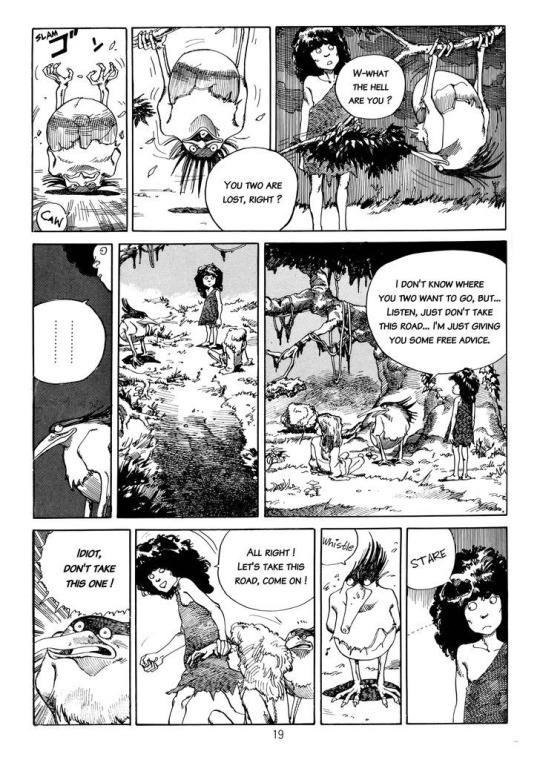

The "How the children reached the witch's house" is also completely switched and changed here - with the mangaka again placing the seeds of the ultimate conclusion of his tale. In the Grimm story, a pretty white bird lures the children to the candy house. But here? They do meet a bird, oh yes... But is a bizarre and clumsy talking bird that freaks off the kids more than anything, and that is part of the same group of grotesque Boschesque creatures that haunt these woods. And this encounter is... all feeding into the strange ambiguity of this very bizarre tale.
Indeed, what happens on a literal level? The bird tells the kids to NOT go on a certain path. Hansel does not trust the bird because it looks like a sketchy freak, and goes there nonetheless - as it turns out, it is the path leading to the child-eating witch. We have here a very literal lesson of "Don't judge a book by its cover, it is not because these weird creatures are monstrous-looking that they'd give bad advice" (even though the fact that Hansel believes they ate his breadcrumbs probably doesn't help). But... when you look carefully another reading opens itself. Indeed, the bird behavior seems to be intentionally sketchy and misleading - how he whistles when Hansel stares, how he side-eyes the children while gving his "free advice". The bird is shocked when the kids do not listen to him and tries to warn them... But immediately afterward smiles slyly, and joins the happy, singing, laughing dance of the strange wood creatures.
We are here confronted with what can be compared to a full "fae logic", or to the same kind of psychological messing-up the Cheshire Cat delivers on Alice in the Disney movie. It is not wonder that these bizarre beings of Bosch's hell can only offer a frightening ambiguity and confusing, misleading signs. They seem to embody and represent the forces of the supernatural and the "otherworld forest" in this specific universe - forces of the absurd and the nonsense, and that as a result are more amoral and mad than anything else, constantly double-playing and double-crossing others, and forever unclear on their real intentions.


The "gingerbread house" of the witch is nowhere to be seen and rather the mangaka offers us a "ridiculous house" - based on a Japanese, untranslatable pun, because the Japanese word for "ridiculous" sounds similar to the word for "candy". The titular house is ridiculous because it is a little wooden structured at the top of the dead branch of a large, dead, broken tree... That happens to look like two pair of butts one on top of the other. A literal ass-house. And just as ridiculous is the witch's design - if it is even a witch, as the story never calls this being anything nor genders it. Traditional witch elements are still kept - the use of a cauldron to cook, Gretel's "meal" being frogs, and the being carrying a broom as a main weapon. But the actual create is actually... some sort of scarecrow or ragdoll with a goofy, smiling face. This isn't just a parody of the original tale, but also another transliteration of the original concept of the tale - a seemingly harmless encounter (an old woman in a house of candy ; a rag-doll in a house made of butts) proves to be a mortal and horrible danger... And if imprisoning Hansel in a cage and fattening him up to eat him wasn't enough, the being literaly prevents Hansel escaping by... cutting off his feet.
Yes, I will not include those pages in this post, but not only does the witch cuts off the boy's feet, she (or he, or it, or they) even sucks the boy's blood from the wounds, commenting it needs to be more salty (and you have an equally disturbing joke when Gretel, who has been deprived of meat and becomes very insulting and violent because of this, briefly considers Hansel's fallen feet on the ground complaiing that she is hungry...). In the middle of the goof and the laugh comes the most brutal and senseless violence, clearly placing this entity as an inhuman monster. Not just that, but the mangaka plays on the anatomy to clearly show how otherwordly this entity is. The arms and legs of the being seem to be humans, with its head being a sort of scarecrow-mask ; and yet, when the being sucks Hansel's bloody legs, it does so with its "painted-cloth mouth", showing that the mask... is its real face.
Speaking of the witch here, it might not be obvious on a first read but it becomes so on a second - the mangaka clearly understood the parallel drawn in the original story between the mother and the witch, and retranscribed them in his story. The... thing of the ridiculous house IS a double of the mother. Notice the wooden spoon on the being's hat - the mother used a wooden spoon to beat up her family. In fact, the witch's clothes are larger and baggier versions of the mother's outfit. The mother constantly frowns and scolds, while the witch's face is stuck in an eternal smile. Finally, the witch cuts off Hansel's feet... when the mother said to her hungry children "If you are so hungry, cut off one of your leg and eat it."


We jump some times ahead and see the results of Hansel's fattening. No bone trick here, as Hansel has no real survival instinct anymore but more about that later. We see here that the witch didn't just make Hansel fat - she made him go from severely underweight to massively overweight, to the point she herself has a hard time handling him. We find back here Otomo's care and focus on extreme bodies, and more specifically unusual bodies for the manga of the time. You don't often see fat bodies in mangas, especially realistic ones, the same way you don't see much skinny or skeletal ones, and thus he gives them a strong focus in his work [Note: I am speaking for the manga world at the time of this anthology's rlease. Today manga greatly diversified itself in body types and drawing styles]
I say Hansel lost all survival instinct, hence the loss of the bone episode, because at first he is seen gleefully and mindlessly accepting his death - as, in his own words, he ate so much food and had so much meat in such a short time he can now "die happy". Then, in a second time he refuses to get out of the cage and has to be dragged to the cauldron... But only because "There's still food to eat". After living so deprived of food and so hungry he couldn't help but ravenously devour a whole loaf of bread upon seeing it, it makes sense that an over-abundance of food would be for him the equivalent of absolute bliss and paradise. That being said, this transformation also occurs two important symbols.
One: The couple of the parents is recreated among the siblings. Hansel becomes just as fat, lazy and mindless as his father, while Gretel, who has grown bitter and jealous because of her bad situation compared to her brother, is now fulfilling the role of her mother. So hungry and food obsessed she schemes to kill the witch - and ultimately does through trickery. Like parents, like children, and there is probably a message about the "cycle of influences and abuses" to be taken out of this.
Two: This is the inversion of the brother-sister roles from the original tale, but again taken to a dark and grim extreme. Remember: in the original story Hansel in a first time is the hero and savior of the day, hatching plans to save his helpless sister ; then in a second time, he becomes a helpless victim and it is Gretel's turn to save him. The mangaka also perceived this dynamic switch, and transcribed it here in the following way. At first, Hansel is the clever one, preparing plans to survive, while Gretel is the dumb and thoughtless kid who only thinks of eating and foils her brother's plan. With the humoristic twist that Hansel is over-thinking things or too clever for his own good - he prepares the breadcrumbs plan, but does not warn his sister of it ; he thinks he escapes a trap by ignoring the bird's advice, when in fact he has been double-played. But in a second time, the over-abundance of food and the fattening left Hansel blissfully stupid and reduced him to the same state as his sister originally was, thoughtless but only driven by food. In return, Gretel's anger and bitterness led her to become the "intelligent one" and prepare her own plan to escape - pushing the witch in her (their? its?) own cauldron.
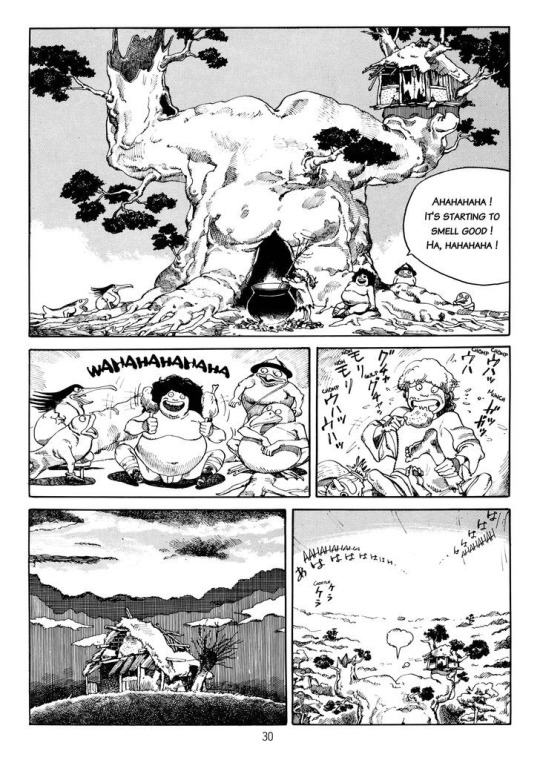

We reach the final part of our tale. You can see above a good full panel of the "ridiculous house" and I forgot to mention something... Why choose an ass, a butt, to make the house ridiculous? It isn't just absurd or vulgar humor - it is also a crass reference to the main motifs of the story. The digestive process. The fairytale is all about starving, eatng and fattening up. It is a tale about devouring and absorbing - and the mangaka highlights it by the vampirism of the witch who sucks off Hansel's blood ; by the wild body changes of the characters who go from one extreme (underweight) to another (obesity)... But also by this house that reminds of what this whole process of digestion, absorption and devoration leads to. The ass. The shit. In fact, by choosing a house that reminds the reader of how digestion ends in crap, the mangaka literaly presents to us the angle of attack of his fairytale parodies and literary pastiche throughout the anthology - take a story, but presents it on the angle of the mundane, the vulgar, the cruel, the absurd. We are literaly being told "It's crap" by the mangaka himself. In this Hansel and Gretel gone are the sweet ducks, and the cute children, and the gingerbread, and the candy... We focus on unpleasant, physical, "real" materials and substances. The bones. The fat. The blood. The crap. Though the actual crap itself is owhere to be seen - it is just evoked in the reader's mind by this butt-house. But it might be also another subtle jab at how in fairytales "nobody goes to the toilet" as the saying goes.
Anyway, enough poopy digressions. Back to the story. Once the witch is dead, the next dark joke arrives, which is a very typical and traditional take on Hansel and Gretel: the two kids feast on the witch's cooked remains. This is a continuation of the joke of Gretel considering eating her brother's feet, and a traditional twist on the "Let's party for the witch is dead" scene. Nothing surprising here. What is interesting however is that the wood-creatures join the siblings in their happy party ad joyful feast, again throwing the tables when it comes to their unclear alignment. With their hellish reference, they could have been the witch's familiars - and yet they are gleeful of the monster's demise, though at the same time they keep constantly laughing, which does not help... They are senseless, constant, grotesque and absurd laughter, almost living laugh tracks - maybe they could even be read as te very embodiment of this book's humor?
What is even more interesting however is when you compare the creatures... and the kids. Design wise. Do you notice something? You should. Remember how Hansel ignored the bird's advice because he considered them weird and ugly freaks? Well... Now the kids look identical to the creatures. Notice Hansel's design. His new girth and round , enlarged belly is identical to the bloated, spherical abdomen of various of the creatures. His happy laughter is mixed with the animalistic joy of the beasts. But more importantly... the wooden crutches and items he gets to paliate his lack of feet are identical to the ones the mysterious fish-with-legs had! The children literaly became the same as the strange wood creatures, or "part of their band".
When the children finally return home, not with riches in this case (except in terms of body riches, as they are now fat, well-fed, healthy and happy), their mother is dead like in the Grimm's tale... But here is a final and very dark twist. The mother starved to death, reduced to a skinny corpse. We do know now the connection between the witch and the mother, and we can read it as the children killing their mother by killing the witch and devouring its body... But let's reconsider the beginning. Remember when I said there was a problem with how the father was such a large and big man untroubled by hunger? And this seemed strange compared to his underfed family... Let us consider how the mother was obsessed with food, with the coming starvation, beating up the kids if they asked for anything... And now she starves to death despite having two mouth less to feed? There are the disturbing and dark implications that this woman suffered from some deep food obsession, a dangerous, paranoid madness that made her starve her own children and impose some sort of artificial famine onto her family. After all, her husband is well-fed, and the creatures of the forest are all pot-bellied and portly built. Only her and the children were skinny - and the children not even for long, as their trp to the forest made them the same girth as their father. In this tale where everybody gets to eat only two people stay hungry - the mother who starved to death, possibly starved HERSELF to death ; and the witch who kept waiting for Hansel to be fat enough, offering all her food to him, and then died before she could get her meal.

And thus the story ends on this bizarre and strangely uncomplete note... The kids look at each other, but the reader is left in the blur as to what this look means. Are they sad? Are they secretly happy? Do they know there is a link between their mother's death and the witch's? The family, free of the tyrannical figure, gather together as a trio now very much alike in appearance. Their father decides it is time for them to live happily together - but what are his promises worth? We know from before he is a lazy, not very bright if not truly silly man, only good at being given orders and not even talented at doing anything he was asked. Is this truly a happy end?
And finally, the strange, absurd, genre-defying creatures of the wood dance silently under the moonlight, in a nonsensical, bizarre, frightening but bizarrely-joyful scene, halfway between the dancing circle of fairies and the hellish sabbat of witches.
#otomo katsuhiro#katsuhiro otomo#hansel and gretel#fairytale analysis#fairytale manga#manga analysis#dark fairytale#fairytale parody
15 notes
·
View notes
Text
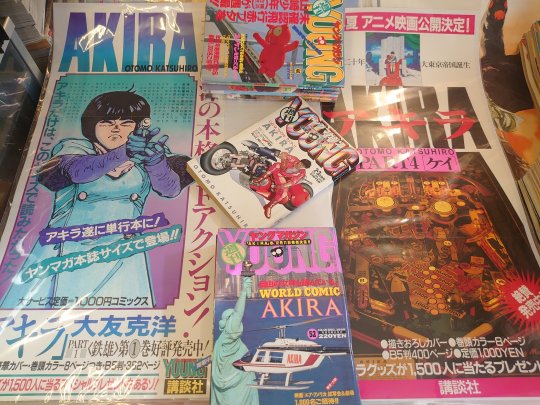
65 notes
·
View notes
Note
Where'd you learn to ink? Your line weight is so crisp
Thank you! I learned through just trial and error honestly. I studied a lot of Manga artists like Kentaro Miura, Aki Irie, Katsuhiro Otomo, and Yasuhiro Nightow. The best thing I can recommend is just to ink a lot. As you get more confident, you'll learn and experiment and start making a new style for yourself.
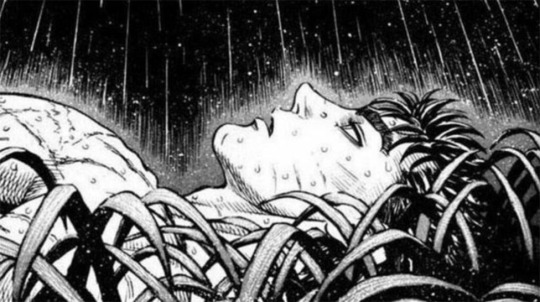


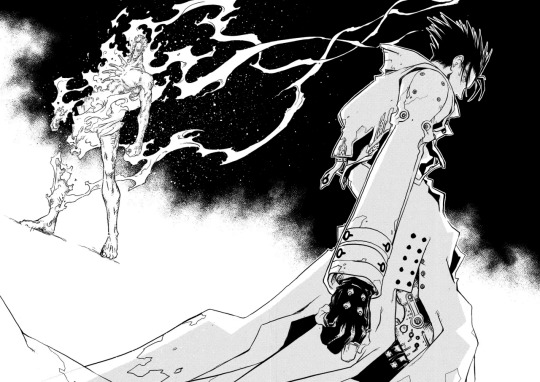
62 notes
·
View notes
Note
For that artist ask thing:
4. favorite character you've drawn
11. artist(s) that influenced/inspired your art style
23. favorite pose youve drawn
4. hmmm im gonna assume this means my favorite picture of a character that ive drawn as oppose my Favorite character TO draw (bc we all already know what that is) so real shit? probably Brock Samson - solely because I have so much trouble drawing from this angle, so to draw him AND achieve this angle, felt good and i love how his face turned out

11. aside from a lot of online artists im inspired by, naoki urasawa is a big influence. i lvoe vintage magazine illustrators/comic artists (think artists like henry beckhoff,roger wilkerson austin briggs ETC) JC leyendecker. ghibli is a big influence, tezuka is another influence, katsuhiro otomo, and many others. theres a lot of things that make up the influence of my art style that isnt exactly attributed to a single artist but i feel i am taking too long to answer this already
23. this sketch of hibiki sneaking from underneath lulu's cloak, laughing

8 notes
·
View notes
Text
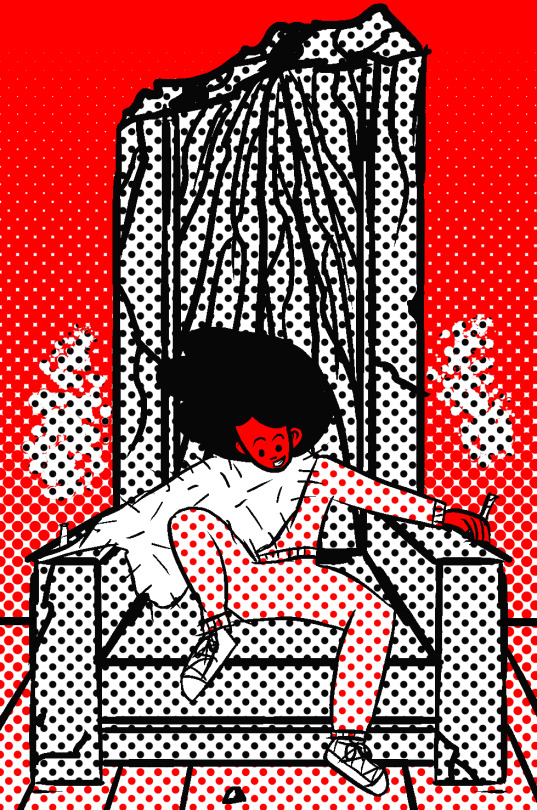
This is the Tetsuo Buddy for December 23rd. It'll come as no surprise that it's a trace from a manga some people might've heard about, called Akira, by Katsuhiro Otomo.

And of course, there's an anime movie. I think we can agree that the movie's better than the manga. And we can agree that the movie's better than all other movies, because it's the best movie ever.
I remember a podcaster called Stewart Wellington talking about how he saw the anime movie in the nineties, and as that was the first anime he saw, he assumed all anime was as good as it. Let's say he was in for a disappointment there.
Talk about a big forehead, eh? I kinda feel like older manga (to the extent Akira can be called 'old') doesn't go all out in character design like new stuff does, which is often a better thing because it allows characters to evolve and become iconic by force of the story and style, rather than by having a design pushed down the readers' throat. Of course, that's easier to do when you've got an insane obsessive artist like Otomo drawing you. Let's see Yoshihiro Togashi do that!
(Sorry, Togashi, I still love you.)
#drawing#ab4es#trace#evil post-apocalyptic psychic#Akira#Tetsuo#Kaneda#TETSUO!!#KANEDA!!#katsuhiro otomo#yoshihiro togashi#character design#forehead#fivehead#psychic king
7 notes
·
View notes